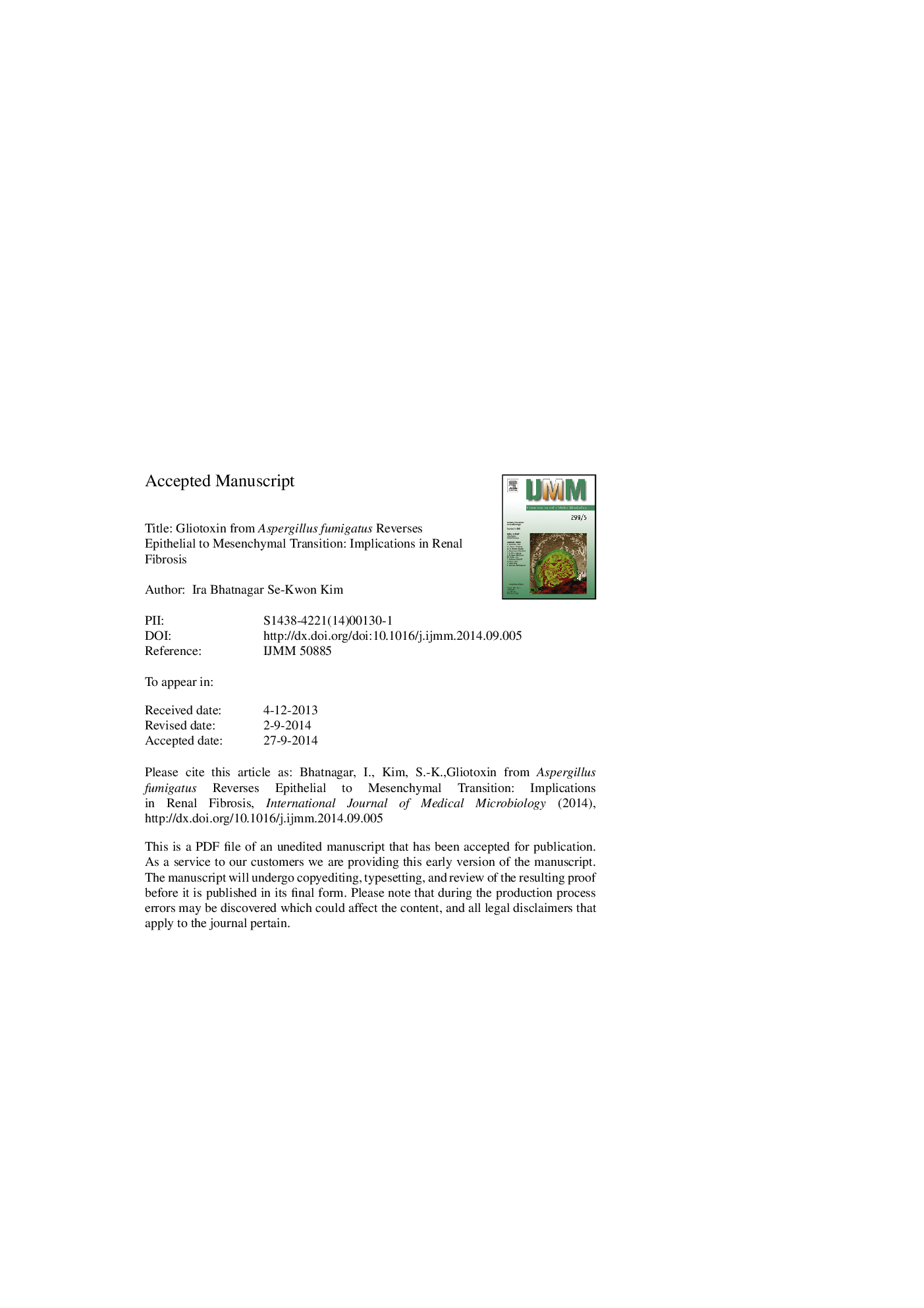| Article ID | Journal | Published Year | Pages | File Type |
|---|---|---|---|---|
| 8385300 | International Journal of Medical Microbiology | 2015 | 29 Pages |
Abstract
Fibrosis is generally characterized by an excessive accumulation and deposition of extracellular matrix (ECM) that progressively leads to the destruction of functional nephrons of the kidney. Current study is aimed to propose a probable antifibrotic mechanism of gliotoxin, isolated from marine Aspergillus fumigatus strain, in proximal tubule renal epithelial cells by inhibiting HIF-1α, Ang-II and NF-κB in a dose dependent manner. GTX at a concentration of 1.6 ng/ml also showed more than 80% cell viability. Scanning Electron Microscopy, fluorescence microscopy, FACS, mRNA and protein profiles further confirmed that gliotoxin reverses the epithelial to mesenchymal transition in HK-2 cells by scavenging the production of reactive oxygen species (g = 69.7) when compared to negative control (g = 467.74). Under the light of obtained results, the present study holds immense promise for the biomedical implication of the fungal metabolite, Gliotoxin in medicine for treating various clinical cases of renal fibrosis.
Related Topics
Life Sciences
Biochemistry, Genetics and Molecular Biology
Biochemistry, Genetics and Molecular Biology (General)
Authors
Ira Bhatnagar, Se-Kwon Kim,
